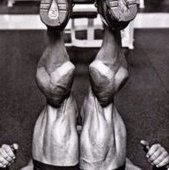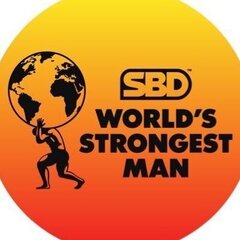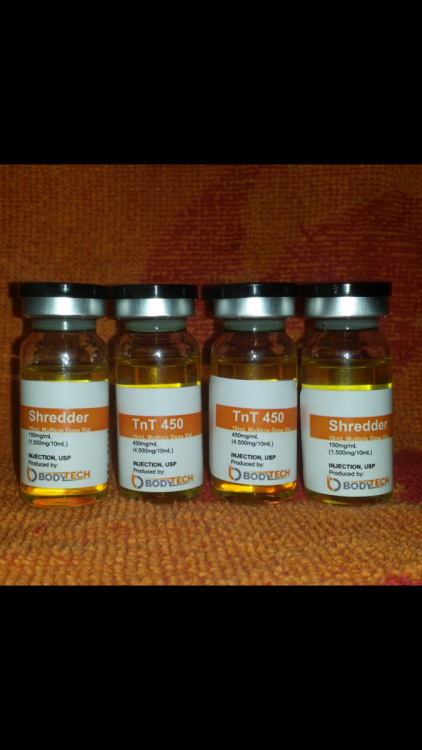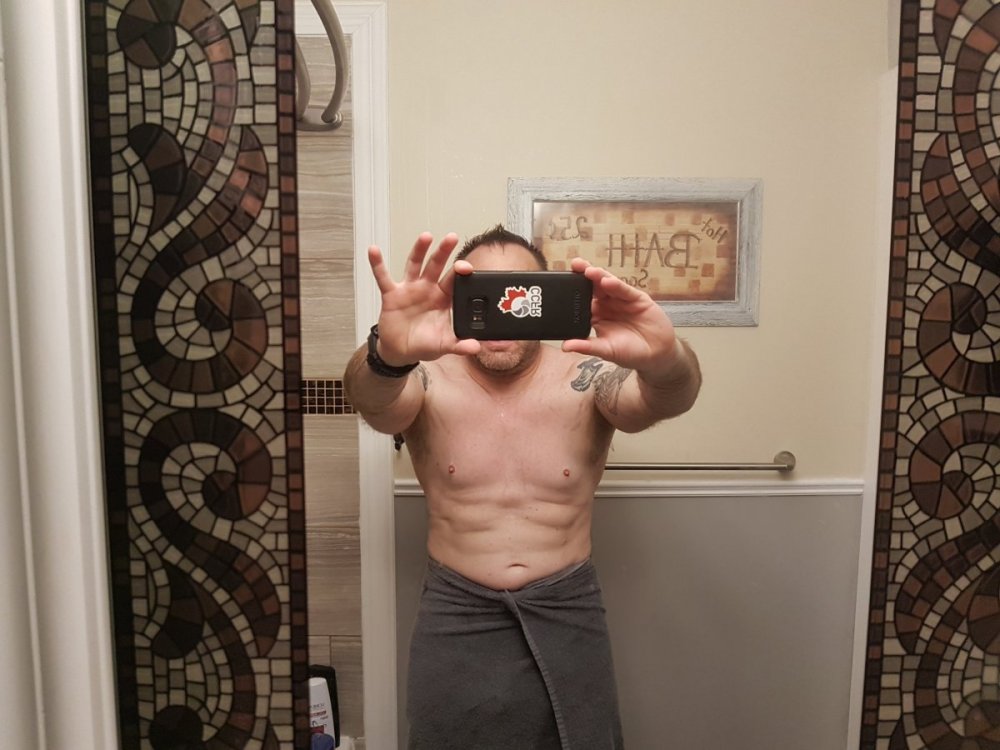Leaderboard
Popular Content
Showing content with the highest reputation on 10/18/2018 in all areas
-
I’m sharing this excellent post on Tren. Originally posted by Sparkey on UK Muscle Bodybuilding Forum. All you need to know about Tren. I absolutely love tren, and have been using it for 5 years straight. Testosterone and trenbolone are the ONLY two anabolic steroids I ever use, and ever will use. So I figure that my experience and knowledge on it should lend to answering people’s questions and curiosity concerning it. This thread isn’t a trenbolone profile thread. It is more along the lines of how to use it practically in the real world, and what to expect out of it, and how you can make it a versatile compound. A ‘profile’ is merely an article that provides the raw data and statistics on a compound as opposed to actual into on real world practicality. I’d like to start off by pointing in the direction of the actual Tren profile for the purpose of familiarizing yourself with the compound first: I know that upon first glance tren seems to freak out and scares everyone (it did with me when I first read about it)… but then again, upon first glance didn’t everything in the AAS world scare you? As I mentioned, I’ve been running tren for 5 years in literally every single cycle consistently. I think I threw it into my 3rd or 4th ever cycle and I instantly became addicted. I’ve found it to be the best bang for your buck. It really is an incredible compound, my favorite by far. All other compounds aside from test (primo, anavar , deca , EQ, turinabol , and ESPECIALLY winny and pretty much every single other AAS out there) goes into the ‘useless pile of s**t bin’ for me. The only exception I make to that is Masteron (Drostanolone), but that’s about it. As I type this, I am currently on 800mg/week of Tren Ace, though I think this will be the only time I will ever run tren this high. I don’t think there’s any need to run stuff that high, especially tren, if you’re just doing this recreationally and not competing or whatever. I will explain this in more detail in a second. Trenbolone is extremely versatile compound that can be used for both cutting AND bulking. For some reason, for years people have been parroting around this line of junk about tren being good only for cutting/leaning out/hardness. This is absurd, and if someone is telling you this - they do not fully understand the capabilities of this compound. What you have to remember here is that trenbolone is a VERY strong compound (5x as strong as testosterone), it is the strongestconventional anabolic steroid out there. Trenbolone’s anabolic rating is 500. By comparison, Testosterone’s anabolic rating is 100 (testosterone is the standard by which all other anabolic steroids are measured against, being that it is the original anabolic steroid by which all others are essentially derived from). That means to get the effect of 100mg of tren, you would need 500mg of test. To get the same effect of 500mg of tren you’d need 2,500mg(!!!) of test, to get the same effect of 1,000mg of tren from testosterone, you’d need 5,000mg of test, etc. GET THE POINT? So, with that being said, I think that there is no need to be running tren at very high doses (especially if it is your first time running trenbolone), and the reason why a lot of people say “be careful, a lot of people can’t take the sides” is because these people are running tren at unnecessarily high dosages. They’re treating it like test, or any other much weaker compound. Tren is in a class all on its own! People need to realize this. The fact of the matter is that people pump out arbitrary numbers when it comes to doses. Why do people tell others to run ‘500mg of test’? Why 400mg of tren? Why 300 mg of this, and 250 mg of that? Why? Because they don’t know. Most of the time these numbers are arbitrarily made up. What I am presenting here is this: closely analyze the characteristics and stats of a particular compound (in this case we are looking at tren), and develop your cycle and dosing protocol based on the stats! There is no need to run 500mg of tren on your first tren cycle. The reason why I would reccomend far less than that is because when you look at trenbolone’s characteristics and see that it is 5x as anabolic as testosterone, you see that it is evident you don’t need very much to make dramatic physique changes. For a first-time tren run, I believe one should be able to garner some very great gains off of 100mg test prop and 250mg tren per week (remember, you’d need 1,250mg test to achieve what 250mg tren does). Hell, 300-400mg tren per week produces great results with still minimal undesireable sides. And there is absolutely no reason to increase tren dosages with every tren cycle you do. For example, if you do 250mg on your first tren cycle there is absolutely no need to think you’ll need to run 500mg on the next one, and then 750mg on your 3rd run, and so on and so forth. That’s just plain stupidity. Remember, this beautiful compound is so strongthat you don’t need huge doses to elicit great gains, and the lower your dose is, the less undesireable side effects for the most part. And the beauty with tren is that it is so strong on a mg for mg basis that if you run it at a low dose, you’re not losing out on your gains! You don’t need a whole lot. Tren is one of those compounds where a little goes a long way. That is my personal saying and rule for tren. Remember that. Now, trenbolone is a 19-nor steroid and as such belongs to the class of 19-nor steroids (along with nandrolone , AKA deca). This makes it a progestin, and it is unable to aromatize into estrogen, nor does it convert into DHT. What does this mean? No bloating, no risk of estrogen-related gyno, no blood pressure skyrocketing from water retention. You can expect very lean nice gains with tren. From week to week, with an immaculate diet and trenbolone in the mix, you will literally see your body change as the days go by. Unfortunately, due to its nature as a 19-nor progestin, it causes some undesireable potential side effects. First lets discuss what a progestin (AKA progestogen) is. A progestin is essentially a derivative of the steroid hormone progesterone, and as such it has progestogenic effects in the body. This is much like something that is a DHT derivative, and therefore has very strong DHT effects (think about DHT-derived AAS). Progesterone is a hormone involved in the female menstrual cycle and pregnancy, and is not something that should be found in men. One of progesterone’s purposes is so signal the pituitary gland to produce and secrete a protein hormone called prolactin. Prolactin is another hormone which serves a purpose in pregnant women, and it binds to receptors in breast tissue to signal lactation. This presents a couple of problems for men, which leads to the side effects from tren that are progesterone-based. The first undesireable side effect commonly discussed is ‘tren-dick’. Basically, it is erectile dysfunction resulting from the use of trenbolone due to its progestogenic effects and prolactin secretion. Prolactin has an EXTREME suppressive effect on the libido. Related effects to this include anorgasmia (inability to achieve orgasm), which is again a direct result of increased prolactin levels in the body. The second undesireable side effect is gyno. Yes, gyno is a potential risk with trenbolone even though it does not aromatize into estrogen. This is once again due to prolactin. In addition to prolactin causing lactation, it can and will cause breast tissue to form. This is known as prolactin-related gyno (as opposed to estrogen-related gyno). In order to deal with these side effects, I highly reccomend the use of a prolactin antagonist. One of the three: Cabergoline (my favorite, and the one I use exclusively), Pramiprexole (a new prolactin antagonist on the market), and Bromocriptine. Vitamin B6 has also displayed strong anti-prolactin qualities. It is also well known that one can eliminate the risk of prolactin-related gyno by controlling estrogen levels and maintaining a low level. This is partially true, as estrogen has an upregulating effect on the progesterone receptor in breast tissue (in layman terms, it makes the receptors more excitable to progesterone). As a result, it is very possible that a very very high estrogen level may upregulate progesterone receptors to the point where even a very small amount of prolactin can set off prolactin-induced gyno. My personal preference: take Cabergoline (or one of the prolactin antagonizers) anyways. Although you may be able to eliminate prolactin-related gyno by keeping estrogen levels under control - it does NOT eliminate or prevent prolactin secretion from the pituitary. This is only a control for the gyno issue. A good prolactin antagonizer such as Prami or Caber run during a tren cycle will prevent any potential prolactin secretion in the first place by operating through dopaminergic pathways. I always run cabergoline at 1mg per week while using tren. No exceptions. FREQUENTLY ASKED QUESTIONS ABOUT TRENBOLONE Q: I keep hearing that tren is a ‘harsh compound’. What does this mean and what can I do about it? A: Tren is often describe as a harsh compound because of its propensity to carry certain side effects not seen at all in any other compounds. These include: night sweats, insomnia, sleep disturbances, increased body heat associated with sweating, and diminished cardiovascular ability. The other reason is because it not only carries a strong anabolic rating, but it also carries a very strong androgenic rating. This means that there is the possibility of increased aggression and irritability. Though I have personally not experienced this, I would say that if you are a hot head when you’re not on anything, then you will most likely be affected in such a way when you use tren. If you plan on using it, make sure to keep a level head at all times and be aware of yourself and all of your actions. And most of all: maintain proper discipline and self control when necessary. Most of these side effects are dose dependant and everyone has different tolerances. As such, should you follow a moderate or low dosing protocol with tren as I outlined above, these side effects shouldn’t be a gigantic issue. Q: Tren diminishes your capacity for cardio? What can I do about it? Yes, it does and is a frequently reported side effect that seems largely dose-dependant (much like everything in this game). This is due to the prostaglandin F2Alpha increase that tren is responsible for. Prostaglandin increases as a result of trenbolone results in bronchial constriction. It is also speculated that this is the reason for the tren cough occasionally seen when injecting. Unfortunately there is nothing I know of that counteracts the reduced cardio effect from tren. But like I said, it is only prominent with high doses. I can only SPECULATE that perhaps a bronchodilator, such as clenbuterol or ephedrine, could assist in alleviating the bronchial constriction. The numbers I am about to give out are not to be taken as gospel, but it has occurred to me that anything under 300mg per week shouldn’t really see diminished cardiovascular ability. At the very least, at that dose it would be extremely minimal. Again, everyone reacts differently. Prior to this cycle i’m on now (800mg/week), I only ever used tren at no more than 300-400mg per week. And I did a full out 13 kilometer ruck march once (with no work-up training for it) with absolutely no problems and I was on a tren cycle at the time. As i’ve mentioned, I gather that the cardio suppressive effect from tren really only starts to manifest itself at higher doses. At 250mg per week of tren, you likely won’t notice a thing. At 900mg per week, you’ll probably get winded just going up a flight of stairs. The diminished cardiovascular ability does leave with the discontinuation of trenbolone. Q: Can I run tren alone? NO. Testosterone at least in some dose must be run with it in order to maintain proper normal bodily functions that testosterone is responsible for. Trenbolone is a very strong compound, and is highly suppressive on your natural testosterone production. Trenbolone, although a very strong anabolic and androgen, does not perform the same way testosterone does in other important areas in the body. Always run testosterone with anything you plan to use. Q: Can I run tren on my very first cycle? You can do anything you want, but I hightly advise AGAINST IT. I do know people who have used trenbolone on their first cycle with no problems, but they are the exception - not the rule. Trenbolone, as mentioned above, carries side effects that are not seen with any other anabolic steroid. When a first-time beginner user encounters some of the side effects from tren, it will be very difficult for him to understand what is happening and why, and how to deal with it. Ultimately, you will end up hurting yourself. Tren is a compound for the intermediate and experienced user ONLY. How many cycles in should you throw tren in, depends on you, your understanding, your education on the matter, and your experience. There is no general rule for how many cycles you require under your belt before running tren. I have seen some brilliant people who grasped the knowledge of AAS so well that they ran tren on their second cycle and coped quite well. Again: the exception - not the rule. It is ideal to run testosterone only for your first cycle, as testosterone is the basis by which all other anabolic steroids come from. It is THE original anabolic steroid. It only makes sense considering that your body ALREADY produces testosterone, and that you are merely putting more of something your body already produces inside you. Therefore it stands to reason that should you react adversely to testosterone, then chances are you will react worse to other anabolics. We use testosterone as a baseline by which all other anabolic steroids are measured, and we use it to gauge our body’s natural reactions to it seeing as though it is the #1 anabolic steroid our bodies are already used to (after all, it is what our body already produces). After your first cycle or 2 (or 3 or more) of test-only, then you can branch out into other compounds and manipulate and test out different cycling techniques. Q: Can I run tren higher than test? Is this safe? Yes and yes. In fact, I very much prefer running the tren higher than test. Ideally, this is what you want to do! I used to run my tren cycles at 400/week of test prop with 300/week of tren. Then I eventually realized, why not just make tren the primary anabolic and leave test for purely maintaining normal bodily function? That way, you totally avoid the estrogen related sides. No risk of bloat, no gyno , no estrogen, no SHBG from high test levels (trenbolone does not have a high affinity for SHBG - nowhere near test). Just solid lean hard gains. I highly reccomend running tren higher than test, and keep test at TRT doses (100mg per week). There are some who are advising against this practice, but I find it funny that they provide no reason behind it. It is not as if the trenbolone acts like pac-man in your blood, eating up all of your testosterone. You will be fine, and this is the ideal method of running tren - not to say running test at a hefty dose isn’t a bad thing, however… if that is what you wish to do, then so be it. Q: Tren carries the risk of gyno as well? Is this true? What can I do about it? Yes, and this is explained above in the main body of this post. Please scroll up and read what can be done to prevent/eliminate it. Q: What are the different forms of tren? What is better? What should I use? Tren is primarily and most popularily found in these 3 formats: Trenbolone Acetate Trenbolone Enanthate Trenbolone Hexahydrobencylcarbonate The difference between the 3 are simply release times and half-lives. There is no solid answer I have on ‘what is better’ and which one you should use. These are things you must determine for yourself. Tren Ace is the most commonly used format. I can definitely say that the benefit to the Acetate variant is that due to its short half life, you can start and stop your cycle quicker in case you encounter any highly undesirable side effects, and as a result wish to halt immediately. With the Enanthate variant, it takes 2 weeks to fully clear your system. Decide accordingly Q: What’s this ‘tren cough’ I hear so much about? What can I do to stop/prevent it? Tren cough is the result of nicking a vein in the injection site and getting some of the oil in the vein. Now, you’ll get the cough from ANY compound when that happens - not just tren. However, tren causes a far worse cough than any others when this happens. Some theories postulated about what causes the cough are: The solvents (Benzyl Alcohol and Benzyl Benzoate) in the solution. This to me does not make sense, as every other injectable compound contains these solvents, and the coughing fits that may occur from other injectables are nowhere near as bad as the cough that results from trenbolone. It has been suggested that the binders in the trenbolone solution are a cause of the cough once the oil enters a vein. For those of you who do not know, in the chemistry world a binder is a material used to bind separate particles together, to give an appropriate consistency, or facilitate adhesion. This theory doesn’t hold very much weight to me considering nearly all drugs in solutions contain binders as well - not just trenbolone. It has been postulated that the cough is the result of the prostaglandin increasing effects of tren, but it is also largely a mystery. I am, however, more likely to believe that this is the more fitting theory. BUT, though the prostaglandin increase from trenbolone is a known fact, this mechanism is highly unlikely to occur immediately upon injection, as that is too fast a time scale for the proposed mechanism. Prostaglandin increases do not and can not occur within minutes to produce an acute severe cough. The prostaglandin increases from trenbolone result in the diminished cardiovascular ability i’ve already discussed, and this is a result of prostaglandin increases over days and weeks - it is not possible for this to cause tren-cough upon the very first injection of someone’s cycle. Thus, it must be the result of something unique to trenbolone compounds entering the blood stream and traveling to the lungs for the cough to be manifested that quickly and that harshly compared to when this happens with other compounds. My own personal theory? Personally, I believe it is the trenbolone molecule itself that when injected into a vein, causes the irritation in the lungs to a far greater degree than other compounds. Why is this and what is the attribute in the tren molecule that would give it this characteristic? I don’t know. This is just my own speculation based on deductive reasoning after looking at all of the other theories out there. To date, the tren-cough and why it is worse with tren compared to any other compound is still largely a mystery in the world. We still do not know with 100% certainty what the ultimate culprit is. Perhaps at some time in the future it will be discovered. All we know so far is that it is generally the result of the oil getting into a vein when injecting. The cough, depending on how much oil has seeped into a vein (i.e. nicked a vein, passed through a vein on the way into the muscle, or literally injected right into it), should last anywhere from a minute to 5 minutes. The severity of the cough can range from a mild little irritating dry-throat esque type of cough to a major coughing fit. I have had both. The cough typically feels like there is something itching in your throat/chest/lung area, and mich akin to a dry throat feeling and something in your lungs that must be expelled, you have the need to cough. This is your body (your lungs specifically) attempting to expel the substance out (because veins carry blood to the lungs; arteries to the heart). This is very much similar to a situation in which you inhale a toxic gas, as anyone can recall if they have ever been exposed to something such as CS gas or tear gas, etc.) What can you do about it? Not much. I can only reccomend injecting very slowly, as it seems like the cough and the severity of it is directly correlated to the speed by which the oil is being injected if there is a vein nearby that has been hit where the oil is seeping into. Some users claim it is possible to surpress the cough by immmidiately starting to inhale-exhale small amounts of air very rapidly through the mouth, much like you are hyperventilating or how pregnant women do it to surpress the contractions during labour. Q: I GOT THE TREN COUGH!!! HELP ME! AM I GOING TO DIE!? WILL I BE OKAY!? No, you are not going to die. Yes, you will be okay. The cough clears within a matter of minutes. The severity of the cough is dependant on two factors: how quickly you injected the oil, and how much of it entered your bloodstream and travelled to the lungs to be expelled. It can manifest as the notorious hard and uncontrolable cough that starts right after or during injection, or a milder controllable one that is just irritating. Q: Prolactin antagonists like Prami and Caber help prevent gyno and tren-dick? How do I use them? Cabergoline can be used at 1mg per week, as it has a very long half life, approximately 7-14 days. Pramiprexole should be dosed at 0.5mg per day for the first few days, and then increase to 1mg thereafter. Nausea has been reported when increasing the dose too fast or too much. If you experience nausea, bring it down a notch. I think everyone will be different with the nausea effect. With that being said, 1-2mg per day is even considered a low dosage. Patients who are perscribed Prami are commonly perscribed 3 or 4mg per day too! Take prami before bed, as it apparently gives you excellent deep sleep and can make you drowsy and sleepy if taken during the day. Apparently it can knock you out cold. Prami is a very new compound, there is still data being collected on it. It seems to carry a couple side effects that Caber does not have. Nausea and drowsiness. I have personally not yet used Prami. Q: Is tren liver toxic? Tren doesn’t put a high amount stress on the liver - it is not C17AA and as an injectable it avoids the first pass. However, it is known that tren is ever so slightly liver toxic due it its ability to resist hepatic breakdown greater than many other anabolic steroids. I have had my liver values checked with bloodwork many times after my tren cycles and have had ZERO problems. All of my enzyme levels were pefectly healthy, which would signify that likely the liver-stressing effect of tren is extremely minimal at best. For safety, one could run a good liver protectant such as Liv 52 or TUDCA/UDCA (ORAL-TOXICITY!!) while on tren if one is extremely concerned. But I do not feel it is essential. Once again, proper bloodwork will tell you everything that is going on with yourself. Q: I’ve heard that tren is harsh on the kidneys and people report urinating very dark unrine when on tren? Is this a bad sign? Kidney damage has been a commonly touted effect of tren. I can say that tren is no harsher on the kidneys than most AAS. The origin of this rumor comes from the fact that often while on a tren cycle, you will find your urine becomes a very dark rusty color (this does certainly happen with me). It is not because your kidneys are being damaged. That dark rusty color are the metabolites of tren being excreted out of your body in your urine. Trenbolone seems to oxidize to a dark rust color very easily, even under refrigeration. The discolored urine tends to happen often, with no signs of renal toxicity. Also, trenbolone acetate is still widely used in animals for carcass weight increase. There seems to be no mention of kidney toxicity in animals, or with the few historical human trenbolone preparations. So basically, what some think is blood in the urine is actually just the metabolite of tren coloring the urine much darker. Tren itself before it is metabolized has a very amber color, hence why it is always amber in the vials it is contained in. Q: If tren lowers T3 output in the body, is it necessary to always run T3 while on a tren cycle? Not likely. If the goal is fat loss, it might be a bonus. I have run tren both with and without T3 before. 95% of my tren cycles are run without T3, and the cycles of tren without T3 were just fine. I didn’t notice any diminished fat loss or metabolic issues. It would be interesting to see bloodwork while on a tren cycle and look at TSH and T3 levels, though… But, my bloodwork post-tren cycle has always shown normal healthy levels of TSH. SO, either the tren did not shut down thyroid output or my output bounced back to normal almost instantly after the cycle ended. Q: Is HCG administration necessary on trenbolone? Not unless you find your body is extremely sensitive to HPTA shutdown and you have a very difficult time restoring it during the post-cycle weeks. I have not found it necessary for myself, due to running short cycles. If you wish to maintain testicular size and function while on cycle, HCG can be used. However, this is for the most part a personal preference among users. My personal opinion is that I see far too many people excessively relying on HCG in the first place. It is very easy to destroy your body’s endogenous LH secretion with it, and is one of the reasons why strongly advise against its constant use while on-cycle. IF it were to be used at all, I advise only during the first week or so of PCT to give the testes a jumpstart - that’s IT. Q: If Tren is highly androgenic, does that mean hair loss will occur with it? What can I do about it? First of all, hair loss is genetic. You must posess the hereditary trait for MPB in order to be susceptible to it. If you do posess the gene for MPB, trenbolone can aggrivate hair loss more than any other anabolic steroid. I want to note that taking ANY 5-alpha reductase inhibitors such as proscar or finasteride will not do a thing to reduce the risk of hair loss from trenbolone. What these compounds do is they inhibit the enzyme (5-Alpha Reductase) responsible for converting testosterone into the more potent androgen Dihydrotestosterone (DHT), which is then the hormone that triggers MPB in those who are prone. Trenbolone does not convert into DHT at all, but trenbolone itself is very, very androgenic . With that being said, I would reccomend looking into getting Nizoral 2% shampoo and use it on a regular basis. It acts as an androgen receptor antagonist in scalp tissue. Nizoral, through the ingredient Ketocozanole, blocks DHT from binding to receptors in your scalp, much like how nolvadex blocks estrogen from binding to receptor sites on breast tissue. Nizoral contains the active ingredient Ketocozanole. When applied topically, it acts as a DHT receptor antagonist at receptor sites in the scalp (or wherever you rub it on), effectively blocking the ability for DHT to bind to those receptors and activate the gene for hair loss. I’ll quote a paragraph an article I found here, which provides a reference: “Support for this comes from a study in 1998 that compared ketoconazole 2% to the proven hair loss drug minoxidil 2% in men with androgenic alopecia.[13] In a sample of 27 men, “Hair density and size and proportion of anagen follicles were improved almost similarly by both ketoconazole and minoxidil regimens.” The men washed with ketoconazole 2% shampoo once every 2–4 days, leaving the shampoo on the scalp for 3–5 minutes before rinsing (as with the treatment of dandruff and seborrheic dermatitis).[13]” Q: What kind of PCT do I need to run after coming off a tren cycle? There is no solid answer to this. I have suggested many times that trenbolone is for the intermediate and advanced user, not for beginners… and there is good reason for this suggestion. By the time you are experienced enough consider trenbolone, you should already know what PCT protocol works best for you and you should already know what to be using for PCT. PCT compounds and protocols are not designed around the cycles they supercede, but they are more designed around the user and how that person recovers post-cycle.1 point
-
Thread to share supplement deals.I'll start by sharing a couple: SVN Canada - 20% Off entire site. Promo Code: HEATWAVE Canada Protein - 20% Off Chocolate Cookie Dough Flavor Protein. Promo Code: COOKIEDOUGH201 point
-
Hello everyone. Starting an all BT cycle as of today and goal is first to drop body fat% over the next 4 weeks and then lean bulk all throughout winter. To start off I'll be running 1ml TnT blend eod and 1ml shredder mix ed. Pinned both tonight and no issues at all. I'll be updating my thread with progress pictures biweekly and with daily routine and diet as well. I'd like to thank Unknown and btrep for bringing me on board and allowing me the opportunity to display what quality products can accomplish along with a drive to succeed. Thank you ?1 point
-
What is a calorie? A calorie isn't actually a thing, it's a unit of measurement. A calorie measures the amount of energy in the food and beverages that we consume. Our bodies use this energy to live and stay healthy. Everything we do relies on the energy we consume in the form of calories. It’s important to know how many calories your body needs because if you consume too many calories, you will gain weight. Experts estimate that if you consume approximately 3,500 excess calories you will gain one pound. So to lose one pound, you would need to create a calorie deficit of 3,500 calories by consuming less calories, burning more calories or a combination of both. Table of Content Types of Macronutrients Macronutrients and body What are Micronutrients Types of Macronutrients What are the different types of macronutrients? There are four main macronutrients: proteins, carbohydrates, fats and alcohol. In protein there is 4 calories per gram. In carbohydrates there are 4 calories per gram. In fats there are 9 calories per gram. In alcohol there is 7 calories per gram. This means that if you look at a food label and it lists 10 grams of protein, 2 grams of carbohydrate, and 2 grams of fat, that food would contain (10 x 4) + (2 x 4) + (2 x 9) = 66 calories. Alcohol doesn’t generally make up a large portion of our daily energy needs (at least it shouldn’t) so the macronutrients proteins, carbs and fats supply the majority of our body’s daily energy needs. The amounts and ratio of macronutrients a person needs every day varies based on their age, lifestyle (sedentary, active, or very active), gender, and goals. Macronutrients and body What do the different macronutrients do in the body? Protein Protein provides amino acids which are the building blocks for the growth and maintenance of muscle tissues, organs, skin, hair, nails, and certain hormones. Of the 22 amino acids, nine are essential to humans. These include histidine, isoleucine, leucine, lysine, methionine, phenylalanine, threonine, tryptophan, and valine. They are called essential because your body is unable to manufacture them so they must be obtained through diet or supplementation. How Much Protein Do You Need? The USDA recommends that Americans get 5-35% of their calories from protein. Remember that this range is set to cover 97-98% of the population. Athletes have higher protein requirements and most athletes would benefit from getting 25-35% of their daily calories from protein. Sources of Protein The best sources of protein are animal based because they provide all of the nine essential amino acids. Animal sources of protein include poultry, fish, meat, eggs, and dairy. Anything that has a face or came from something that has a face. Certain plant foods are very high in protein but they are ‘incomplete’ protein sources since they do not contain all the nine essential amino acids. In order to make a complete plant protein source, you need to combine a grain and a legume (for example rice and beans) or a grain and a seed (for example oatmeal and flax seeds). Carbohydrates Carbohydrates include starches, sugars, and fiber and come in two forms: complex and simple. Simple carbohydrates include sugars like table sugar and high fructose corn syrup. Complex carbohydrates are starches such as rice, oatmeal and potatoes. Complex carbohydrates are generally considered the healthiest option since they raise blood glucose levels the slowest. How Many Carbohydrates Do You Need? The USDA recommends that Americans should get between 45-65% of their daily calories from carbohydrates. Keep in mind that these recommendations are for people of a healthy BMI so if you are trying to lose weight, you will need to consume less carbohydrates then recommended. Sources of Carbohydrates The best carbohydrates are micronutrient-dense whole foods such as whole fruit, unprocessed grains, winter squash, beans, and potatoes. Fiber Unlike other food components, fiber isn't digested by your body because humans don’t produce the necessary enzymes to digest fiber. Instead, it passes through your gastrointestinal tract intact, keeping you regular and preventing constipation. Fiber is classified into two categories: soluble, which dissolves in water, and insoluble, which doesn't dissolve. Soluble fiber - Soluble fiber helps lower blood cholesterol and glucose levels. Soluble fiber is found in oats, peas, beans, apples, citrus fruits, carrots, barley and psyllium. Insoluble fiber – Insoluble fiber promotes the movement of material through your GI system and helps prevent constipation. Insoluble fiber is found in bran, nuts, beans and vegetables. Most plant-based foods such as oatmeal and beans contain both soluble and insoluble fiber. Daily fiber recommendations from the Institute of Medicine Age 50 or younger Age 51 or older Men 38 grams 30 grams Women 25 grams 21 grams Fat Fats are the densest energy source providing 9 calories per gram. Fats make up cell membranes, steroids, cholesterol, and 60% of your brain. Fats also support the absorption of fat-soluble vitamins, cushion your organs, and act as your largest form of energy storage. Fats are classified into three categories, saturated, monounsaturated and polyunsaturated fats. Saturated fats tend to be more solid at room temperature (like a stick of butter), while monounsaturated and polyunsaturated fats tend to be more liquid (like olive oil). Saturated fat is mostly found in animal foods such as milk, cheese, poultry and meat. Saturated fat is also found in tropical oils such as coconut oil, palm oil, and cocoa butter. Saturated fats should only be consumed in moderation because they raise bad (LDL) cholesterol levels. Monounsaturated fat is found in avocado, nuts, and olives. Eating foods high in monounsaturated fats help lower bad (LDL) cholesterol and raise good (HDL) cholesterol. Polyunsaturated fats can be broken down into two main categories: Omega-3 fatty acids which are found in walnuts, flaxseed, and fatty fish such as salmon, anchovies, and sardines. Omega-3 fatty acids should be a stable in your diet for their health promoting effects. Omega-6 fatty acids which are found in vegetable oils such as soybean oil, corn oil, and safflower oil. Omega-6 fatty acids promote inflammation and should only be consumed in moderation. There’s actually one more man-made type of fat called trans fats. Trans fats are artificially made by hydrogenating unsaturated fats to become solid at room temperature. Trans fats have no place in a healthy diet. How Much Fat Do You Need? The USDA recommends that fats should account for 20-40% of your daily calories. Even if you are on a low calorie diet and trying to lose weight, you should not lower your fat intake lower than that because of the pivotal role fats make in manufacturing hormones. Studies link diets high in mono and polyunsaturated fats to higher levels of testosterone. Sources of Fat The best sources of fat are plant-based such as nuts, seeds, avocados, olives, and coconut. If you’re looking for healthy oils, you have quite a few options: flaxseed, hemp seed, avocado, macadamia nut, olive oil, and coconut oil. I don’t recommend flaxseed or hempseed oil for cooking since they have low smoke points and will easily become rancid when exposed to high heats. For cooking, use oils that have a higher smoke point like coconut, avocado or macadamia nut oil. When purchasing oils, always make sure the label says “expeller-pressed”, “virgin” or “unrefined.” Otherwise, the oil may have been extracted using chemicals which damages the essential fatty acids in the oil. Alcohol Alcohol has 7 calories per gram. The calories in alcohol are 'empty calories' that have no nutritional value. To make matters worse, alcohol is the first fuel to be used when combined with carbohydrates, fats or proteins, postponing the fat-burning process and contributing to greater fat storage. If you must drink alcohol straight liquor such as rum, rye, vodka, or gin with a sugar free mix is the best option. What are Micronutrients? What are micronutrients and why are they important? Micronutrients are the vitamins and minerals required by your body to maintain good health. Unlike macronutrients, you only need small amounts of micronutrients. Micronutrients play an essential role in the production of enzymes, hormones, and proteins and in regulating metabolism, heartbeat, cellular pH, and bone density. Vitamins With the exception of vitamin D, vitamins cannot be produced by the body and must be obtained through diet or supplements. Your body needs 13 vitamins to stay healthy: There are four fat-soluble vitamins in the human diet - Vitamins A, D, E and K. Fat-soluble vitamins must be taken with meals that contain dietary fat to be absorbed by the body There are nine water-soluble vitamins in the human diet – Vitamins B1, B2, B3, B5, B6, B7, B12, folate and vitamin C. Water-soluble vitamins can be taken with meals or on an empty stomach. Water soluble vitamins are not stored in the body and are excreted in the urine if they’re not used. Minerals Minerals are inorganic naturally occurring substances that your body needs to keep your bones, muscles, heart, and brain working properly. Minerals are also important for making enzymes and hormones. There are two kinds of minerals: macro minerals and trace minerals. Your body needs macro minerals in large quantities. Macronutrients include calcium, phosphorus, magnesium, sodium, potassium, chloride and sulfur. Your body only need small amounts of trace minerals. Trace minerals include iron, manganese, copper, iodine, zinc, cobalt, fluoride, molybdenum and selenium. Your body needs exceptionally small amounts of the nickel, silicon, vanadium, and cobalt. Although you only need small amounts of micronutrients, they are extremely important to your health. Many of the most debilitating health conditions are linked to deficiencies in vitamins and minerals. For example, The World Health Organization estimates that 1.6 billion people worldwide have a reduced ability to work due to an iron deficiency.1 point
-
Few more tidbits: Energy is 'the capacity to do work.' This definition is very specific. It is has nothing to do with some colloquial uses such as 'feeling' energetic or a person having 'positive' energy. 'Energy' drinks often contain little to no food energy but are instead stimulants. Stimulants may make stored energy more available but are not a source of energy themselves. In the context of food, we use the 'Calorie' measurement for food energy. Spelled with a capital 'c" denotes a kilocalorie (amount of energy required to raise the temp of one kilogram of water by one kelvin/degree celsius). This is an older unit of measurement; the modern unit is the Joule. One kcal is equal to 4.19 kilojoule. A pound of bodyfat contains about 3,500 Calories (kcal). A pound of pure fat contains 4,086 Calories. The difference is that bodyfat also contains some water. Energy cannot be created or destroyed - only converted from one form to another at no more than 100% efficiency. Energy is also conserved. This is why you cannot lose weight by eating more calories or vice versa(all else being equal). The human body can turn protein into carbs (glucose) and carbs into fat but cannot do the same in reverse. So protein is a more versatile macro. Carbs themselves do not make people fat. It is the calories that carbs contain that contribute to excess energy intake that cause it. Complex vs simple carbs is an outdated classification. Use GI instead. Test on Monday. ?1 point
-
Placed a small order to test the waters since I had not ordered anything since the changeover (or since an old board for that matter)! Order was sent and received as fast as always, have not tried the products yet obviously but all looks well! New rep(s) seem very good and responsive to deal with. Tony21 point
-
Fish oil is also great for cholesterol issues especially when on Tren1 point
-
sos things are coming along nicely I have upped the GH to 4 IU a day and am continuing on with the cycle and wow so far so good I'm down under 194 now well 193.7 but still on point I am so amazed this has been fast for a cutting cycle and I cannot tel if the HGH is the culprit or the addition of the provision but the weight is falling off me all blood levels look good I have increased RBC and whites are back to normal levels thyroid is back to functioning normal liver values as well look good nov 1st I am having my Lgrf checked with other things to see where the GH is blood level wise and I will keep you posted I will be injecting 2.5 hours prior. all I can say is I'm amazed I was 260 of fat in feb from prednisone and other meds now off all meds and starting to get my body and life BACK....this is a Pic from me fat in FEB to NOW. Proof that this gear and GH is legit as well as the fact this Fasting also works Stay tuned ill post more pics up in another few weeks1 point
-
Indeed they would've been. I was asked to review this compound when I was already in the middle of a cut. And by it's characteristics of it it suited my current cycle. For this log, I'm using it to maintain strength more than anything. it's doing an admirable job. I don't usually cut this far into the year, but it's my 50th at the end of this month so that is my target date. Fall winter is usually a strength phase for me. This year I'll only train for strength December into January. I'm going to take November off blasting. After that time I'll run one month of D-bol with anavar and one month of madol perhaps with stanolone again. It will be interesting to run them back to back for a comparison. Why not halo instead of D-bol? Because I already have the D-bol and want to use it up. Halo I think would be a better compound for direct comparison. December would be a good time to use it as when I blow up it''ll be winter and I'll be covered in clothes and I can hide the bloated look which I'm not a fan of. Using madol in January will work nicely as I transition into my winter/spring cut which usually runs 16 weeks from February to May 24th weekend. Both compounds will be run with a TRT level dose of test-e. I usually run 250 mg a week.1 point
-
1 point
-
Yep I am in the same boat as well. Feel I have more energy faster than if I were to eat before.1 point
-
1 point
-
Does pain happen before it gives (or is it just always generally there)? Pain has an inhibitory effect where it shuts down local musculature to protect itself from whatever 'threat' is occuring. Usually there is a misfire in quad/ham coordination and it causes the joint to move beyond a certain degree and little sensors that surround the tissue go off and shut down before bad things happen. Best way to solve that is through continued conditioning and desensitization of the tissues.1 point
-
This is very well timed. My wife has been asking me if there is anything out there that can help her match my libido as we both get older. Thanks For The Info1 point
-
G-Force, the voice of reason. I agree, let’s take the high road (if there is one to be had) on this. Back to reviews.1 point
-
1 point
-
So you're saying the 4 grams of fish oil i take every day is slowly killing me? But will help me look good? Oh well. Shooting star baby....1 point
This leaderboard is set to Toronto/GMT-04:00
















